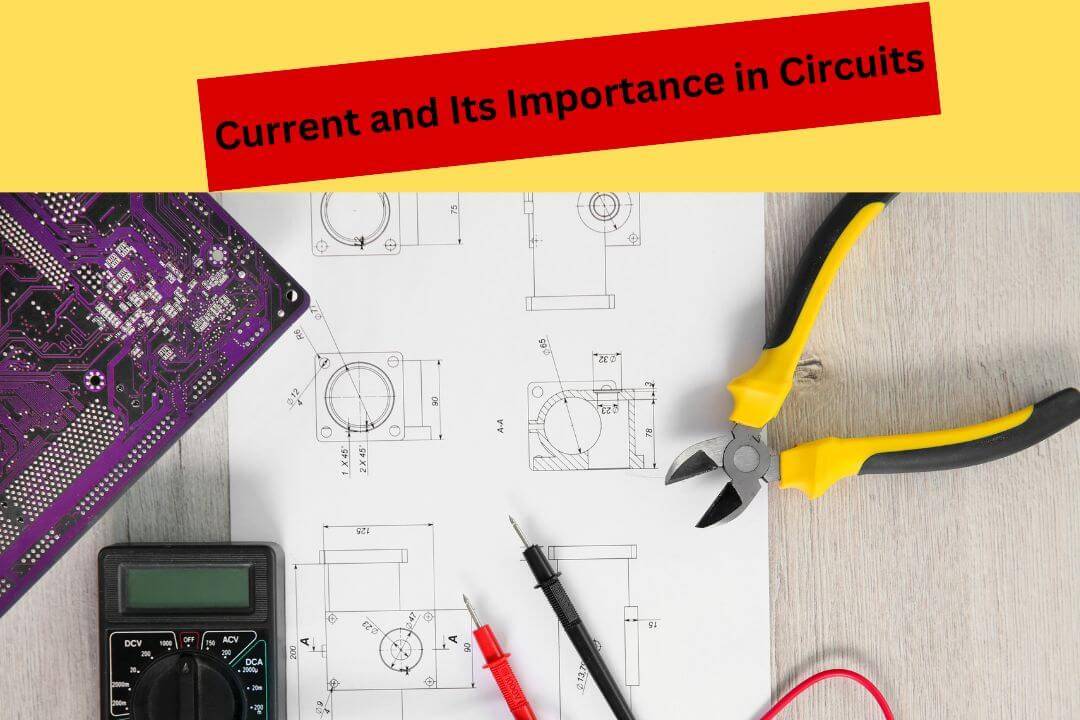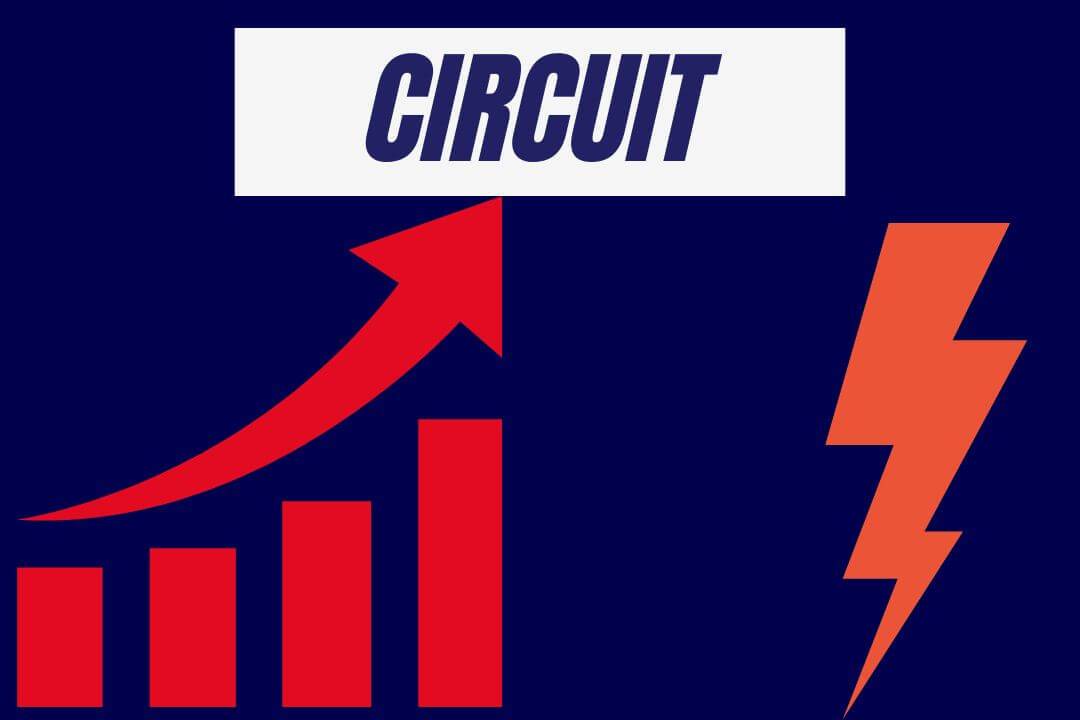Introduction
Welcome to our comprehensive guide on how to increase current in a circuit. When powering your electronic devices or creating robust electrical systems, understanding how to optimize current flow is essential. This article will delve into the key factors influencing current flow, explore practical techniques for increasing current, discuss safety considerations, and provide real-world examples to help you empower your circuits with the enhanced current.
Understanding Current and Its Importance in Circuits

Current is the flow of electric charge through a circuit, measured in amperes (A). It plays a crucial role in powering various electrical devices, from small electronics to large-scale industrial systems. Increasing current allows more power to be delivered to the load, ensuring efficient operation and optimal performance.
Factors Affecting Current Flow in a Circuit
Several factors influence the flow of current in a circuit. By understanding these factors, you can effectively make informed decisions to increase current. Here are the key considerations:
- Voltage:
Voltage (V) represents the electrical potential difference in a circuit. As per Ohm’s Law (V = I * R), higher voltage can increase current, given a fixed resistance.
- Resistance:
Resistance (R) opposes the flow of current in a circuit. Lower resistance allows for greater current flow, while higher resistance limits the current. Choosing components with lower resistance values can optimize current flow.
- Power Source:
Selecting the appropriate power source is vital for increasing the current. Ensure that the power source can provide the voltage and current capacity required by your circuit.
Selecting the Right Power Source for Increased Current
Selecting a power source that can deliver the required voltage and current capacity is crucial to increase the current in your circuit. Consider the following:
- Evaluate the specifications of power sources, such as batteries, power supplies, or generators, to ensure they meet the desired current output.
- Consider factors like voltage stability, efficiency, and overall reliability when choosing a power source.
- Consult with electrical engineers or experts to determine the most suitable power source for your specific circuit requirements.
Optimizing Circuit Components for Enhanced Current Flow

Optimizing the components within your circuit is another practical approach to increasing current. Here are some strategies to consider:
- Use low-resistance wires and cables to minimize losses and maximize current flow.
- Select components, such as transistors and diodes, with higher current-handling capabilities.
- Opt for low-resistance connectors and terminals to reduce resistance and ensure efficient current transfer.
- Consider employing high-current relays or switches designed to handle larger current loads.
Harnessing Ohm’s Law: Voltage, Resistance, and Current Relationship
Understanding Ohm’s Law and its relationship between voltage, resistance, and current is crucial for increasing current in your circuit. Ohm’s Law states that the current flowing through a circuit is directly proportional to the voltage and inversely proportional to the resistance. By manipulating these variables, you can enhance the current flow. Here’s a brief overview:
- Increasing voltage: Increasing the voltage across a fixed resistance will result in a higher current flow.
- Reducing resistance: Lowering the resistance in a circuit will allow for increased current flow for a given voltage.
- Balancing voltage and resistance: Adjusting both voltage and resistance simultaneously can fine-tune the desired current flow.
Practical Techniques for How to Increase Current in a Circuit
Now that we have covered the fundamental concepts let’s explore some practical techniques to increase current in your circuit. These methods can be applied depending on your specific requirements and the characteristics of your circuit.
Series and Parallel Circuit Configurations for Current Boost
By connecting components in specific circuit configurations, you can optimize current flow. Two commonly used configurations are series and parallel circuits.
- Series Circuit: In a series circuit, components are connected sequentially, with the same current flowing through each element. The current remains constant while the total resistance increases in a series circuit. To increase current in a series circuit, you can reduce the overall resistance by using lower resistance components or adding a parallel branch.
- Parallel Circuit: In a parallel circuit, components are connected in separate branches, allowing the current to divide among them. Each component receives the total voltage of the circuit. In a parallel configuration, the total current is the sum of the currents through each branch. To increase current in a parallel circuit, you can add additional branches or reduce the resistance in each branch.
Carefully consider the requirements of your circuit and choose the appropriate circuit configuration to maximize current flow.
Utilizing Power Amplifiers to Enhance Current Output
Power amplifiers are electronic devices designed to increase the current and power delivered to a load. These amplifiers take a low-power signal and amplify it to a higher power level, allowing for increased current flow. Power amplifiers are commonly used in audio systems, where a higher current is required to drive speakers and deliver quality sound.
When using power amplifiers, ensure compatibility with your circuit’s voltage and impedance requirements. Select amplifiers with the appropriate current-handling capabilities to effectively boost current output.
Employing Current Boosting Devices and Modules
There are various devices and modules available that are specifically designed to boost current in circuits. These devices can be integrated into your circuit design to enhance current flow. Some examples include:
- Current Boosting Transistors: High-current transistors with low saturation voltage can be utilized to increase the current handling capacity of your circuit.
- Current Boosting Modules: Modules such as current amplifiers or mirrors can be incorporated to amplify and control current flow, allowing for increased output.
When employing these devices and modules, refer to their datasheets and specifications to ensure compatibility with your circuit requirements. Proper integration and configuration are crucial to effectively increase current.
Enhancing Current Flow through Efficient Wiring and Connections
Efficient wiring and connections play a significant role in maximizing current flow. Consider the following practices:
- Use appropriate wire gauge: Selecting a wire gauge that can handle the expected current without significant voltage drop is essential. Thicker wires with lower resistance are suitable for high-current applications.
- Minimize wire length: Longer wires result in increased resistance and voltage drop. Keep wire lengths as short as possible, especially in high-current sections of the circuit.
- Properly terminate connections: Ensure tight and secure connections between wires, terminals, and components. Loose or corroded connections can introduce resistance and hinder current flow.
By optimizing wiring and connections, you can reduce resistance and allow for efficient current transfer throughout your circuit.
Safety Considerations and Precautions When Increasing Circuit Current
While increasing current in a circuit can offer various benefits, it’s crucial to prioritize safety. Higher current levels can present risks such as overheating, component damage, or electrical hazards. Implement the following safety considerations and precautions:
Overcurrent Protection: Fuse and Circuit Breaker Basics
Install appropriate overcurrent protection mechanisms like fuses and circuit breakers. These devices are designed to interrupt current flow in the event of excessive current or a short circuit, preventing damage to the circuit and reducing the risk of fire or electrical hazards.
Thermal Management for High-Current Circuits
Effective thermal management is essential for circuits handling high currents. Excessive current can generate heat, which may degrade components or lead to thermal runaway. Implement heat sinks, fans, or other cooling methods to dissipate heat efficiently and ensure the circuit remains within safe temperature limits. Adequate ventilation and proper component placement can also contribute to efficient thermal management.
Real-world Examples and Case Studies of Current Enhancement

Let’s explore real-world examples and case studies that demonstrate effective current enhancement techniques.
Case Study 1: Designing a High-Current LED Lighting System
This case study focuses on designing large-scale installations’ high-current LED lighting systems.
- Select LED drivers: Choose LED drivers capable of delivering the required current for your LED modules. Opt for drivers with higher current output options and efficient thermal management features.
- Parallel configuration: Connect LED modules in parallel to allow the current to divide among them. Ensure that each module receives the necessary current while maintaining overall system stability.
- Heat dissipation: Implement heat sinks or thermal pads to manage heat generated by high-current LED modules. Adequate thermal management ensures extended LED lifespan and optimal performance.
Case Study 2: Building a Powerful Audio Amplifier Circuit
In this case study, we’ll explore the construction of a powerful audio amplifier circuit for high-fidelity audio applications.
- Power amplifier selection: Choose a power amplifier module with sufficient current output capability to meet the requirements of your audio system. Consider factors such as impedance matching and efficiency.
- Power supply considerations: Select a robust power supply capable of delivering the required voltage and current for the amplifier. Ensure stability and reliability to support high-current demands.
- Thermal management: Employ good heat sinks and cooling mechanisms to dissipate heat generated by the power amplifier. Excessive heat can degrade performance and potentially damage the components.
Conclusion: Empower Your Circuits with Increased Current
Increasing current in a circuit requires a comprehensive understanding of the factors influencing the current flow and the implementation of practical techniques. You can successfully enhance current flow in your circuits by selecting the right power source, optimizing circuit components, utilizing circuit configurations, employing current-boosting devices, and ensuring proper safety measures.
Remember to consider the specific requirements of your application, consult relevant datasheets and specifications, and prioritize safety throughout the process. You can improve your electrical systems’ performance, efficiency, and reliability by empowering your circuits with increased current.
Now that you have a solid understanding of how to increase the current in a circuit, it’s time to put your knowledge into practice and elevate the performance of your electronic designs. Enjoy optimizing your circuits and witnessing the benefits of enhanced current flow.
Frequently asked questions
1. How does voltage affect current flow in a circuit? Voltage plays a crucial role in current flow. According to Ohm’s Law (V = I * R), higher voltage increases current, given a fixed resistance. Increasing the voltage across an improved resistance can achieve a higher current flow.
2. How can I optimize circuit components to enhance current flow? To optimize current flow, minimize losses by using low-resistance wires, cables, connectors, and terminals. Additionally, select components, such as transistors and diodes, with higher current-handling capabilities. High-current relays or switches that handle larger loads can also enhance current flow.
3. What are the benefits of series and parallel circuit configurations for increasing current? Series circuits allow the same current to flow through each component, while parallel circuits divide the current among components. You can increase the current in a series circuit by reducing overall resistance or adding a parallel branch. In a parallel circuit, adding branches or reducing resistance in each branch increases the total current. Choosing the appropriate circuit configuration can maximize current flow based on your requirements.
4. How do power amplifiers contribute to increasing current output? Power amplifiers are designed to amplify low-power signals to higher power levels, thereby increasing current flow. They are commonly used in audio systems to drive speakers and deliver quality sound. Selecting power amplifiers with the appropriate current-handling capabilities ensures effective current output enhancement.
5. What safety precautions should I consider when increasing circuit current?
It’s essential to prioritize safety when increasing circuit current. To prevent excessive current flow, implement appropriate overcurrent protection mechanisms, such as fuses and circuit breakers. Effective thermal management is crucial for high-current circuits to dissipate heat and prevent component damage. Adequate ventilation, proper component placement, and heat sinks or cooling mechanisms are essential for maintaining safe temperature limits.
Remember to thoroughly evaluate your circuit’s requirements, consult experts, and prioritize safety measures while implementing techniques to increase current flow in your circuits.
